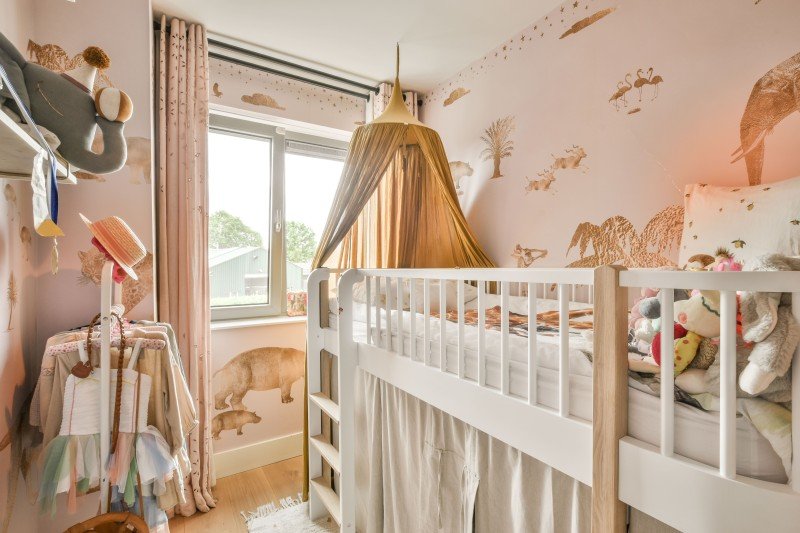The Reasons You'll Want To Learn More About Bunk Beds Sale
Bunk Beds Sale: A Comprehensive Guide to Choosing the Right Bunk Bed for Your Home
Bunk beds have actually long been a staple in kids's bedrooms, using a mix of space-saving performance and enjoyable. Whether accommodating Bunk Bed For Kids or sisters, friends on sleepovers, or just taking full advantage of a playroom, bunk beds have actually become a necessary component in modern family homes. As sales on bunk beds increase, it ends up being significantly essential for customers to make informed decisions when purchasing one. This short article will cover the essentials of buying a bunk bed, from types to safety functions, along with pointers for maintaining the integrity of your investment.
Types of Bunk Beds
When thinking about a bunk bed sale, it's important to comprehend the various styles offered on the market. Below are the most common types:
Traditional Bunk Beds: These include two beds stacked one above the other, sharing a single frame. They are often the most economical option.
L-Shaped Bunk Beds: This style features one bed positioned vertically and another horizontally. This plan develops additional space below the upper bed, which can be utilized for storage or a backyard.
Lofted Beds: Similar to traditional bunk beds but with no lower bed. Instead, the space beneath can be used for a desk, play location, or extra storage.
Triple Bunk Beds: For households with a larger variety of kids or regular sleepovers, triple bunk beds supply 3 sleeping locations in a space-efficient style.
Futon Bunk Beds: These styles combine bunk beds and futon sofas. The bottom section transforms into a different seating area, enhancing functionality.
Convertible Bunk Beds: These beds can be separated into two specific beds, making them flexible as children's requirements alter over time.
Table 1: Comparison of Bunk Bed Types
Type
Description
Space Efficiency
Additional Features
Conventional Bunk Bed
Two beds stacked vertically
High
Simplest design
L-Shaped Bunk Bed
One vertical and one horizontal bed
Moderate
Play or storage space
Lofted Bed
Elevated bed with open space below
High
Work/play location
Triple Bunk Bed
Three stacked beds
Very High
Accommodates more users
Futon Bunk Bed
Bunk bed with a convertible futon
High
Multi-functional
Convertible Bunk Bed
Can be split into two separate beds
Moderate
Versatility & & longevity
Security Features to Consider
Security is vital when investing in a bunk bed. Below are essential security features to search for:
Guardrails: Adequate guardrails must be present on both sides of the upper bunk to prevent falls. They should be at least 5 inches greater than the bed mattress.
Ladder Design: Look for tough, wide ladders with slip-resistant rungs. Guarantee that the angle is not too steep for easy access.
Stability: Ensure the bed is built with strong materials, such as strong wood or heavy-duty metal. The bed should not wobble when in use.
Weight Limit: Check the weight capacity of the bunk bed to guarantee it can accommodate the desired users securely.
Material Safety: If possible, select beds made from non-toxic products or those fulfilling security standards for children's furnishings.
Table 2: Essential Safety Features
Function
Description
Importance
Guardrails
Sides of upper bed to prevent falls
Essential for kid safety
Ladder Design
Solid, slip-resistant rungs
Help safe and simple gain access to
Stability
Develop quality to avoid wobbling
Makes sure security and longevity
Weight Limit
Maximum weight capacity
Avoids mishaps
Product Safety
Non-toxic, safe materials
Protects kids's health
Maintenance Tips for Bunk Beds
To extend the life of your bunk bed and make sure continuous safety, consider the following maintenance ideas:
Regular Inspections: Periodically check the structure for loose screws, bolts, or any signs of wear. Tighten fasteners as essential.
Tidy Periodically: Dust and clean the surface areas frequently. Use suitable cleaners that won't damage the finish.
Examine Weight Limits: Be conscious of weight limitations, especially with older children or adults who might wish to utilize the upper bunk.
Avoid Climbing on Guardrails: Educate children not to use guardrails for climbing up or playing to reduce the risk of accidents.
Frequently Asked Questions (FAQs)
Q1: What is the age limitation for children to safely utilize bunk beds?A: While it differs by the manufacturer, numerous recommend that kids under 6 must not sleep in the upper bunk due to security concerns.
Q2: How can parents discourage risky climbing?A: Setting clear guidelines about bunk bed usage and monitoring kids can assist. Furthermore, using a bed tent can dissuade climbing up while developing a fun sleep environment.
Q3: What should I think about when embellishing a room with bunk beds?A: Ensure there is adequate space around the bunk bed for safe movement, and utilize the decor to produce customized spaces for each kid.
Q4: Is a lofted bed appropriate for older kids?A: Yes, lofted beds can be ideal for older kids as long as they meet security requirements and the kid is responsible enough to use them safely.
Bunk beds serve a practical function while including an aspect of enjoyable to a child's bedroom. As sales of bunk beds continue to increase, careful consideration of types, safety functions, and upkeep practices is important for parents and caregivers. By understanding these essential aspects, households can discover the best bunk bed for their home, ensuring both functionality and security for years to come. Whether it's for siblings sharing a room or producing a cozy pajama party space, a well-chosen bunk bed can offer happiness and usefulness, making it a deserving investment.
